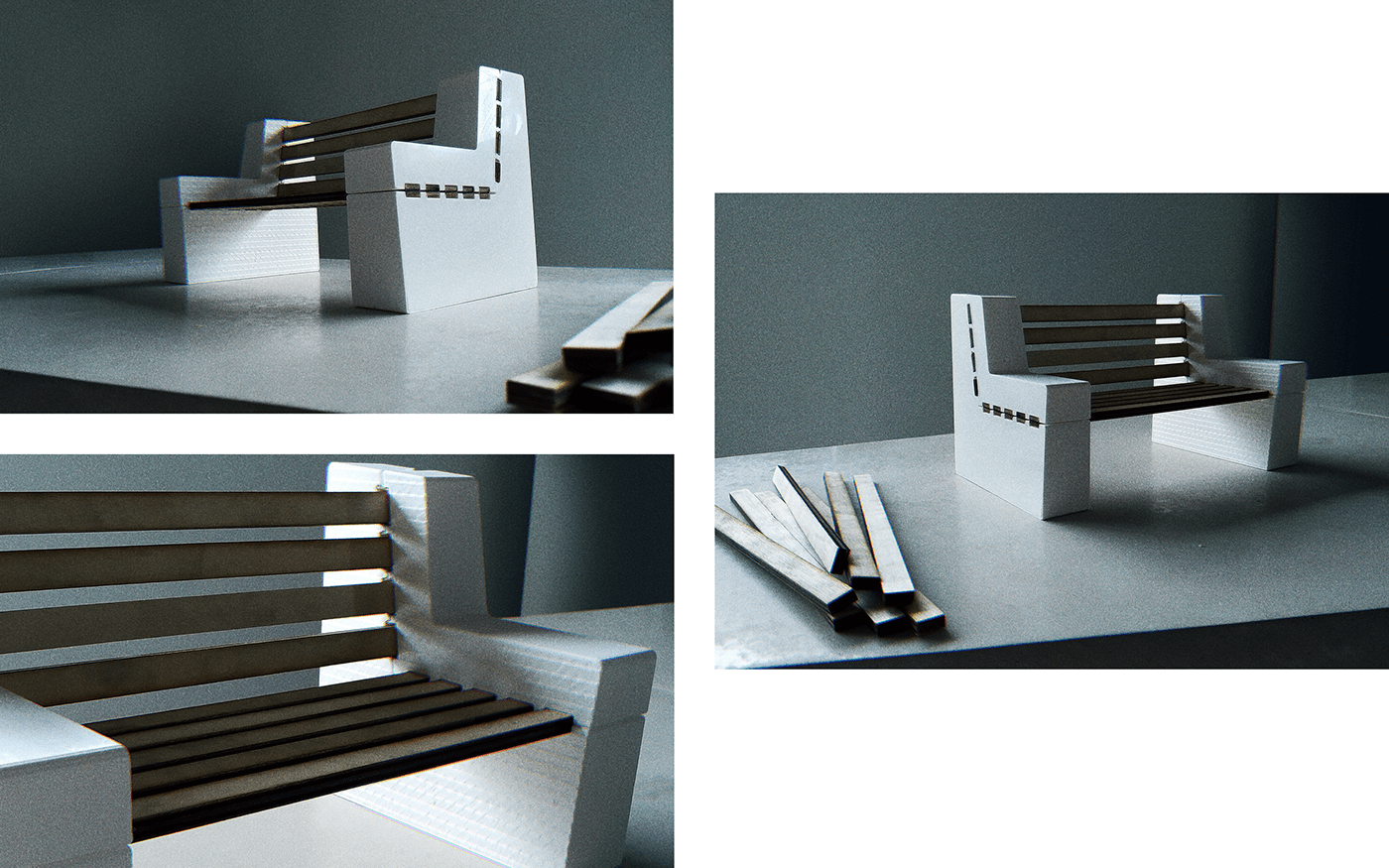
VERU BENCH //
Brief
The goal of the three-week long university project was to experiment with furniture joint methods. At the beginning of the course I decided to design an outdoor bench that needs a minimum amount of parts to function. I also had to build a scale model that can demonstrate the overall idea behind the final design.
Inspiration
In terms of aesthetics, I drew inspiration from the look of prehistoric monuments like Stonehenge. I emphasized the heaviness of concrete by using sharp edges and slightly tilted planes.

Process
Given the prehistoric inspiration, I used concrete to form the base of the bench. The other material I chose was textile or some kind of elastomeric mesh. It was a relatively laborious process to finalize the joint I imagined. The first versions I rendered were much more complicated and used a tube to hold the seat and the backrest. As I moved forward, I realized the amount of concrete was huge compared to the thin textiles, so I worked with wood laths onward.

Concept
Veru is an outdoor bench that needs a minimum of four concrete parts and eight laths to function. It is important to notice that an actual outdoor bench needs a lot of other parts that would hold the laths in place because of the special features of wood.


Scale model
The 1:5 scale model was brought to life via laser cutting, 3D printing, and a tiring amount of grinding.


Thank you for watching!




